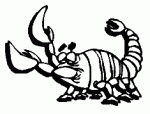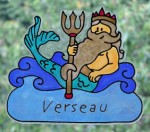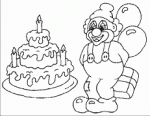 Главная
Главная
 Свежие новости
Свежие новости
 Галерея фотографий
Галерея фотографий
 Гороскоп
Гороскоп
 Стартовая
Стартовая
 В закладки
В закладки
 Регистрация
Регистрация
 Проверить сообщения
Проверить сообщения
|
МЕНЮ меню магазина
Riiulid Навигация
АРХИВ ВЫПУСКОВ
Популярные статьи
ВХОД В АКАУНТ |
Рисуем нос:  Нос – это та часть портрета, которой художники часто уделяют мало внимания. Но так быть не должно! Если у вас не получится нос, пострадает и весь портрет.  Выше представлены три варианта изображения носа. Рисунок слева – только простая схема. Две линии, чтобы показать длину носа, круглый "шарик" на его кончике и ноздри. Нос построен из простых форм. На среднем рисунке показана простая схема, но уже с небольшой прорисовкой теней. Рисунок справа представляет собой полностью законченный нос. Обратите внимание, что схематичные линии на освещённой стороне носа почти исчезли. Заметьте также, что контуры носа в целом теперь обозначены не линиями схемы, а тенями.  На верхнем изображении форма носа показана красными линиями контура. Смотрите, как резко идут вниз эти контурные линии, обогнув кончик носа. Там обычно и располагается тень – прямо под кончиком носа (она обозначена на рисунке внизу синим цветом). Иногда эта тень будет сильной, иногда более мягкой и светлой, но, в большинстве случаев расположения источников света, тень будет именно в этом месте.  Также заметьте, что на освещенной стороне носа и на переносице теней почти нет. Это обычная ошибка новичков – выделять весь контур носа, с обеих сторон. Не нужно делать этого, тогда нос будет плоским, а портрет нереалистичным.  На рисунке сверху я выделил три области вокруг носа, который требуют особенно деликатного и внимательного отношения, когда дело доходит до прорисовки и обозначения теней. Их не нужно сильно затенять, конечно, если у человека на портрете нет глубоких морщин в этих местах. Обычно лишь намек на тень – это то, что вам необходимо. Например, область, закрашенная синим, не должна быть темной. Легонько обозначьте «шарик» на кончике носа, добавьте немного тени сверху, возле глаза. На некоторых портретах освещённая сторона носа все-таки затемняется, но, по сути, не так уж сильно. Особенно внимательны будьте с переносицей, не увлекайтесь с тенями. Обычно теневая сторона носа (слева, в данном случае) и так прорисована и затемнена достаточно хорошо, чтобы передать иллюзию глубины и осязаемости рисунка. «Морщинка от улыбки» (на рисунке выделена зеленым) также требует осторожности в рисовании. Я обозначил на рисунке лишь намек на эту линию, причем, обратите внимание, как она сначала сужается, а только потом прерывается. У некоторых людей эта морщинка будет глубже и темнее, но вы удивитесь, когда узнаете, как легко и практически незаметно надо обозначать эту линию. Я видел портреты, где она ярко выделяется, но это все незачем, это только портит все впечатление от портрета. То же самое и с областью, обозначенной красным. Не перестарайтесь! Если вы слишком затемните её, то это будет выглядеть как последствия насморка.  Белые области вокруг носа (см. иллюстрацию выше) также требуют особого внимания. Основания ноздрей обычно не должны быть ярко очерчены. Если вы выделите все основание носа (под ноздрями), то это будет казаться плоским, и обычно так делать не нужно. Вторая отмеченная белым область - между ноздрей и началом "морщинки от улыбки". Вам не всегда придется помещать линию «морщинки» прямо сразу за ноздрей. У некоторых людей есть небольшое пространство между «морщинкой от улыбки» и ноздрей. Помните об этом, когда рисуете. На приведенной выше картинке это пространство также есть, даже немного преувеличенное. Обращайте внимание на людей, это достаточно распространённая особенность.  На этой иллюстрации, я пытаюсь показать угол носа при повороте головы на 3/4. Обратите внимание на фиолетовую линию, которая проходит по центру лица. Так как это - портрет лица повернутого на 3/4, а не нарисованного в анфас, но и нос должен быть повернут соответствующим образом. Область, заштрихованная красным, показывает какая часть носа находится по левую сторону этой вертикальной линии. Нос должен «выпирать», здесь он будет расположен прямо. Синяя штриховка показывает часть ноздри с другой стороны прямой линии. Это всё к тому, что следует помнить, что повернутое лицо может сочетаться только с также повернутым носом. Зеленая линия показывает, что край ноздри будет располагаться практически прямо под краем внутренней части глаза. (Это работает точно также, если вы рисуете портрет в анфас.) Оранжевая линия показывает, где край ноздри должен находиться по отношению к середине рта. Некоторые люди имеют более узкие носы (или рты), но обычно, такие линии можно выстраивать. Важно заметить, что у девочки на рисунке не получилось слишком широкого или большого носа, но всё-таки эта ширина есть. Частая ошибка новичков состоит в том, что они делают ноздри и сам нос слишком узкими. Тщательно позаботьтесь о том, чтобы обеспечить вашему носу необходимую ширину. Ненадолго обратимся к рисованию носа в профиль:   Сам рисунок и моя раскрашенная версия (я постарался на славу, верно?). Здесь хорошо видно, как далеко выдается нос из общего контура лица. Не бойтесь переборщить с этим! Конечно, нос не должен быть огромным, но если вы сделаете его слишком плоским – это будет смотреться неправдоподобно. Размеры носа могут быть разными, но я видел, что слишком много робких новичков, таким образом это - другая область, куда необходимо обратить особое внимание. Ещё один важный момент: убедитесь, что длина носа выбрана правильно (см. рисунок с двумя фиолетовыми линиями выше). Длину носа высчитывают от его ширины (иллюстрировано красными линиями). Длина не намного больше чем ширина! Не все лица будут иметь те же самые пропорции, конечно. Но я заметил, что некоторые художники портрета делают носы слишком длинными, или слишком короткими. Тщательно позаботьтесь об этом. Оригинал на английском языке: The nose is a feature that is often overlooked by portrait artists. But it shouldn't be! If you don't get the nose quite right, the whole portrait suffers. Above are three nose illustrations. The drawing on the left shows the simple outline of the nose. Two lines for the length of the nose, the round "ball" at the tip of the nose, and the nostrils. The nose is made of these simple shapes. The middle illustration shows the basic outline of the nose, with some shadow and rendering starting to show. The illustration on the right shows a completely rendered nose. Notice how the strong "outline" on the light side of the nose is almost gone. Notice how the outlines for the nose are now indicated more with shadow, rather than harsh lines. This illustration above shows the shape of the nose through the red "contour" lines. Notice how the nose dips in rather dramatically at the tip. There's usually a shadow right underneath the tip of the nose. (As illustrated below, with the blue color.) Sometimes this shadow will be strong, sometimes it will be softer and lighter, but in most lighting situations, it is there. Also notice that there is not a lot of shadow to the lighter side of the nose, or on the bridge of the nose. It is a common newbie mistake to outline the entire contour of the nose, on both sides. This is not necessary, and usually flattens the nose, and makes the portrait look unrealistic. In the illustration above, I have highlighted three areas around the nose that require a delicate and sensitive hand when it comes to shading and rendering. They don't have to be drawn with a heavy hand, unless the subject you are drawing has REALLY heavy and deep lines on their face. Usually just a light suggestion is all that is needed. For instance, in the illustration above: the blue area, showing the side of the nose has hardly any shading. Just a slight indication of the "ball" of the nose, and a bit of shadow up near the edge of the eye. Some portraits will have a little more shading on the highlighted side of the nose, but usually not too much. Take great care when shading the ridge of the nose. Usually the shadowed side of the nose (on the left side of this illustration) will have enough detail and shadow on it to provide the needed illusion of depth and dimension. The "smile line" (the green line in the illustration) is also another area that should be dealt with a gentle hand. I have put just a little suggestion of the smile line in the drawing, which then tapers off and disappears. That was all that was needed in this particular picture. Some people will have a longer and darker "smile line". But even then, you might be surprised to see how light and soft you ought to draw this line. Just take it easy. Too often I have seen artists give all their portraits "Howdy Doody" lines, when they were not needed. It ruins the look of the portrait. Same goes for the thingie (can't remember the name) under the nose (illustrated in red). Don't overdo this. A light suggestion can go a long way. When overdone, you can make a person look like they have a runny and red nose! The white areas around the nose (as indicated in the illustration above) also require special attention. The areas around the bottom of the nostrils (as seen in the highlighted illustration) usually does not need to be delineated. If you outline the whole bottom of the nose (under the nostril) it will not look very flattering, and usually isn't necessary anyway. There is a distinct area on the side of the nose (between the nostril and the beginning of the "smile line"). You don't always have to put the "smile line" right smack up against the nostril. On some people, there is this little space between the smile line and the nostril. Look for it when you are drawing around the nose. The above illustration has this little space exaggerated a bit, but not much. If you look at many people, you'll see that little space. In this illustration, I am attempting to show the angle of the nose from 3/4 view. Notice the purple line that goes down the center of the face. Since this is a three-quarters view portrait (instead of full-on) the nose is also at a three-quarters view, and therefore, at an angle. The red lined areas (yeah, real flattering, I know) show how much of the nose is on the left side of this line. The nose "sticks out", is not straight up and down. The blue-lined areas to show the nostril area on the other side of the this straight line. This is to show you that when the face is at an angle (three-quarters view, or whatever) you have to have the nose at an angle too. The green line shows that the edge of the nostril is approx. aligned straight down from the edge of the inside of the eye. (The eye lines up with the nostril this way from the front view too.) The orange line shows how the edge of the nostril lines up in the middle of the mouth. Some people have narrower noses (or mouths) but for the most part, they will line up similarly. As you will notice, the girl in the drawing does not have an extremely wide or large nose - and yet it does have some definite width to it. A common newbie mistake is to make the nostrils and width of the nose way too narrow. Take special care to get the width of the nose correct. A quick overview of the nose in profile: The original drawing is on the left (click to see larger view). I had a lot of fun messing up the illustration on the right! Notice the purple nose. (Yes, yes, exceedingly flattering, once again!) This shows how far the nose sticks out from the plane of the face. Don't be afraid to make the nose stick out. It doesn't have to be huge, but if you make it too flat, it will not look believable. There will always be variations in nose size, but I have seen too many "newbies" be timid with the nose, so this is another area to pay special attention to. Another important thing to remember: be sure to observe the length of the nose. (As illustrated with the two purple lines above.) Compare the length of the nose with the width of the nose from the side (as illustrated by the red lines). The length isn't that much more than the width! Not all faces will have the same proportions, of course. But I've noticed that some portrait artists make the nose waaaay too long. Or, they'll make it too short. Take great care when drawing the length of the nose. The nose, step-by-step: First, sketch out the outline of the nose. You don't have to draw a dark line down both sides of the nose. Usually one side is more shadowed than the other. Start to add a little shading to the side of the nose that is in shadow, and the bottom of the nose. Define the nostrils. Shade the nostril that is in shadow a little bit, but not as much as the rest of that side of the nose. The nostril sticks out a little bit, and gets more light on it. Finish shading the nose. Suggest, through gentle shading, the "roundness" of the center (bulb) of the nose, and the roundness of the nostrils. Часть, Рисуем, Элементы головы, рисуем Уважаемые владельцы мастер классов, если Вы увидели отсутствие ссылки на автора МК пришлите пожалуйста нам на e-mail v2v2v2 [собачка] inbox.ru автора МК, ссылку на МК и на страницу нашего портала, в самые короткие сроки мы установим их. Приносим свои извинения авторам МК Все статьи и уроки находящиеся на сайте представлены сугубо в ознакомительных целях. Пожалуйста, поставьте свою оценку этой статье.
|
||||||||||||||||||||||||||||||

 5895 |
5895 |  15 марта 2008
15 марта 2008 






